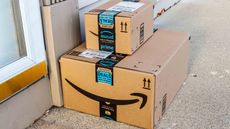Financial Lessons from Immigrants: Save and Grow
Virginia's Indian community thrives by encouraging its young people to get good educations and start small businesses.

The prosperity and phenomenal growth of Northern Virginia’s Indian community boils down to three e’s: entrepreneurship, education and English. But Sudhakar Shenoy says he would add one more element. Shenoy, a pioneer of the community, emigrated in the 1970s to further his education and is now chief executive of IMC, a computer services company. “Fear is a great motivator,” he says.
Fear of failure, that is. Indian immigrants are generally well educated and fluent in English. Many owe their entry into the United States to immigration rules that give preference to highly skilled workers. For Shenoy’s generation of émigrés, those ingredients assured that America “got the best and the brightest,” he says. “The chances of success were very high.”
Shenoy arrived with $5 in his pocket and in debt, having borrowed money for his plane ticket. He says the Indian government gave him $8 before he left; he spent $3 and used the remaining money for a bus ticket from New York City to Philadelphia, where he stayed with a friend until he could enroll in graduate school with an assistantship that earned him a stipend. His father had warned him that he’d have to live on his own earnings because, at the time, the Indian government didn’t allow citizens to send money overseas.

Sign up for Kiplinger’s Free E-Newsletters
Profit and prosper with the best of expert advice on investing, taxes, retirement, personal finance and more - straight to your e-mail.
Profit and prosper with the best of expert advice - straight to your e-mail.
Shenoy earned a graduate degree in electrical engineering and an MBA from the University of Connecticut, where he taught for five years. In 1981 he followed the path of many Indian immigrants and started his own company, IMC. Entrepreneurship is woven into Indian culture, says Shenoy, who is the grandson of entrepreneurs with interests in farming, steel and textiles. “As kids, we always thought of having our own businesses,” he says.
In starting IMC, Shenoy relied on another quality common to many first-generation Indian Americans: thrift. He stuck to a monthly household budget of $611, which included a $410 mortgage payment for the home where he lived with his wife, Bina, and two children. Bina took a job as a bank teller and brought home $615 a month. The couple’s savings of $2,000 went toward renting a small office and buying some used furniture. Shenoy’s “calculated gamble” paid off. In six months he had 15 employees. The company now employs 450.
The Indian community in Northern Virginia has rapidly expanded in the past 15 years. In prosperous Fairfax and Loudoun counties, outside Washington, D.C., the Indian population has grown from about 27,000 in 2000 to 64,000 today. Many live in the booming Dulles Corridor, a thriving computing and telecom region.
The population growth is also the result of chain migration, a phenomenon in which immigrants settle near others of the same culture. Nayantara Sheoran moved from India to the U.S. in 1999 and is now a doctoral student in cultural studies at George Mason University, in Fairfax County. She says the appeal to Indians “is to be able to raise their children in what they consider to be a more Indian culture.” That includes everything from access to Indian food and Hindu temples to preserving traditional values, such as respect for elders.
But it would be a mistake to think of the Indian community as insular. “They don’t tend to stay behind ethnic walls,” says Eileen Curtis, president of the Dulles Regional Chamber of Commerce, but rather they travel freely in business and social circles. That, she says, has helped Indians become a “vibrant engine of entrepreneurial growth.”
Although entrepreneurs are by definition competitive, cooperation is also a hallmark of the Indian business community. Shenoy co-founded the Washington, D.C., chapter of Indus Entrepreneurs, a nonprofit that aids young business owners through networking and education. He has taught a course at George Mason called “From Geeks to Gazillionaires,” which helps entrepreneurs learn key skills.
The current president of Indus Entrepreneurs is Dolly Oberoi. Like Shenoy, she came to the U.S. for grad school and founded a high-tech firm in Northern Virginia. In building C2 Technologies, a company with $55 million in sales, she learned lessons that she passes on to others. “Do they know about the Small Business Administration? Do they know venture capitalists? We ollectively feel that the next generation shouldn’t face the same challenges we did.”

-
 Stock Market Today: Nasdaq Spirals as Netflix Nosedives
Stock Market Today: Nasdaq Spirals as Netflix NosedivesA big earnings boom for credit card giant American Express helped the Dow notch another win.
By Karee Venema Published
-
 Get These 40 Earth Day Deals and Discounts
Get These 40 Earth Day Deals and DiscountsMonday, April 22, is Earth Day. Many of your favorite retailers are celebrating with deals on sustainable products, recycling services, and more
By Kathryn Pomroy Published
-
 403(b) Contribution Limits for 2024
403(b) Contribution Limits for 2024retirement plans Teachers and nonprofit workers can contribute more to a 403(b) retirement plan in 2024 than they could in 2023.
By Jackie Stewart Published
-
 Roth IRA Contribution Limits for 2024
Roth IRA Contribution Limits for 2024Roth IRAs Roth IRA contribution limits have gone up for 2024. Here's what you need to know.
By Jackie Stewart Published
-
 Best Foreclosure Sites for Finding Properties
Best Foreclosure Sites for Finding PropertiesMaking Your Money Last Wondering how to find foreclosed homes for sale for your next residence or to flip for a profit? These websites will guide you to foreclosures and real estate-owned properties to buy.
By Bob Niedt Last updated
-
 Four Tips for Renting Out Your Home on Airbnb
Four Tips for Renting Out Your Home on Airbnbreal estate Here's what you should know before listing your home on Airbnb.
By Miriam Cross Published
-
 Five Ways to a Cheap Last-Minute Vacation
Five Ways to a Cheap Last-Minute VacationTravel It is possible to pull off a cheap last-minute vacation. Here are some tips to make it happen.
By Vaishali Varu Last updated
-
 How Much Life Insurance Do You Need?
How Much Life Insurance Do You Need?insurance Instead of relying on rules of thumb, you’re better off taking a systematic approach to figuring your life-insurance needs.
By Kimberly Lankford Published
-
 When Is Amazon Prime Day?
When Is Amazon Prime Day?Amazon Prime In 2023 Amazon had two Prime Day events — one in July and another, called Big Deal Days, in October. We expect 2024 to follow the same schedule.
By Bob Niedt Last updated
-
 How to Shop for Life Insurance in 3 Easy Steps
How to Shop for Life Insurance in 3 Easy Stepsinsurance Shopping for life insurance? You may be able to estimate how much you need online, but that's just the start of your search.
By Kaitlin Pitsker Published